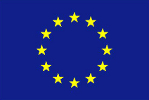

Funded by the European Union
WP 6 Integrated systems and applications
The work package has started in July 2013, in the 19th project month. The network plans for a demonstrator to be developed and installed in the Copernicus Science Centre (CNK) in Warsaw, Poland. A letter of intent between the CNK and IPPT has been signed in May 2013. Milestone M1, planned for month 27, is the decision on the number and type of the demonstrator. However, even now it is clear that the most probable option possible for the network as for now is a demonstrator of a remote weigh-in-motion system installed on a nearby Vistula bridge, which will include the weighing capability and couple it with a real-time simulation of bridge response. It is becoming increasingly clear that initially considered demonstrators, which exploited the concept of an adaptive impact absorption, will need to be discarded because of concerns of security of the visitors.The most probable setup for the weigh-in-motion system will consist of a computer monitor to show real-time animations of the current (exaggerated for better visibility) deformations of the nearby railway bridge due to the actually passing trains. The animations will be synchronized with the weigh-in-motion system and based on computations performed with a dedicated software for structural analysis. In-between the successive trains, a presentation could be shown to explain the basics of the system and to show the benefits of such and similar systems for increased security of contemporary cities.
Building of such a demonstrators will require the following general steps:
- Development of a railway weigh-in-motion system.
- Development of a computational system for simulating the dynamic response of the bridge to identified loads.
- Development of an environment for creating the animations of the computed response, including the deformations of bridge elements and their stresses.
- Development of the educational presentation.
- Integration of the above subsystems.
